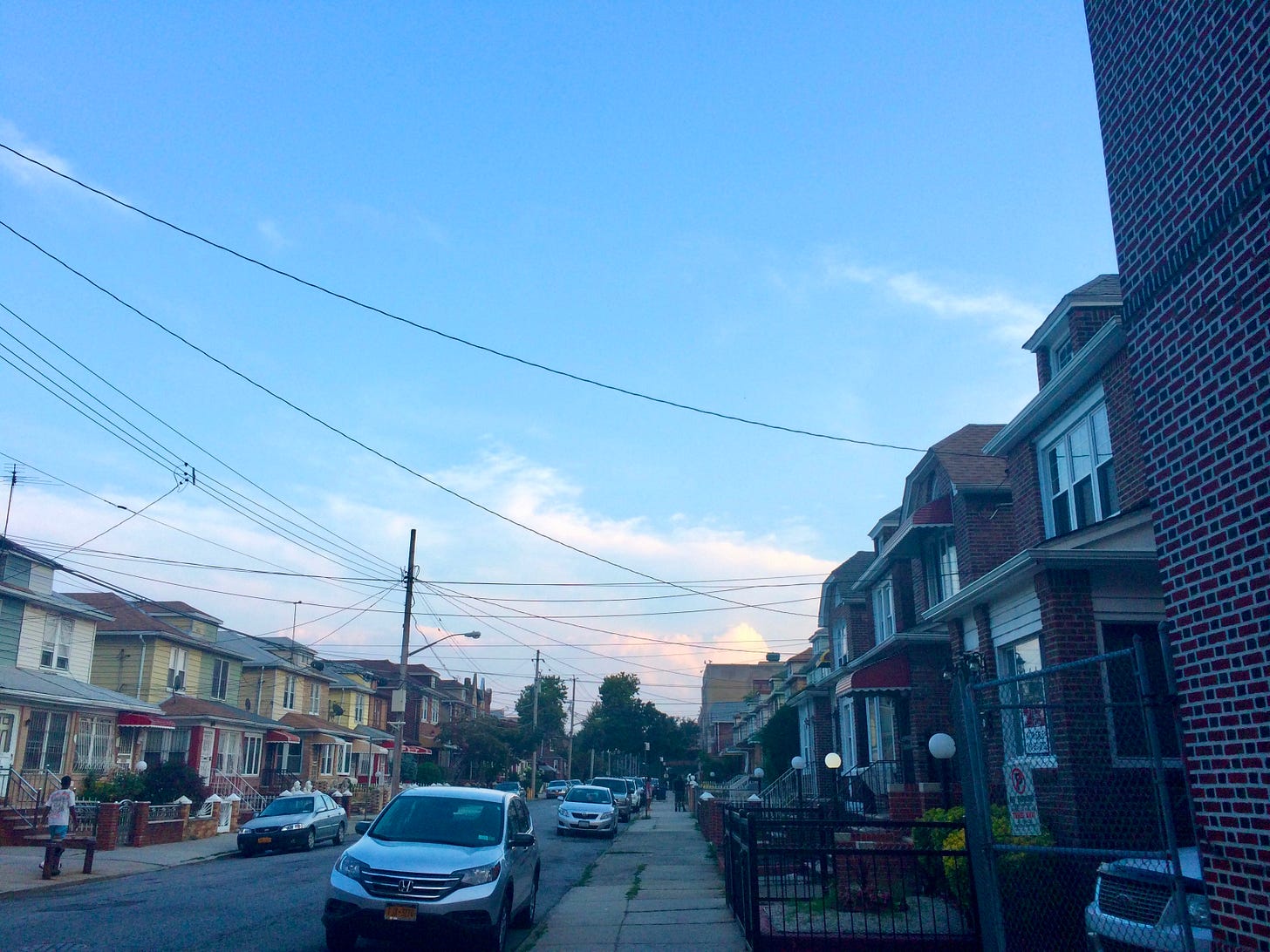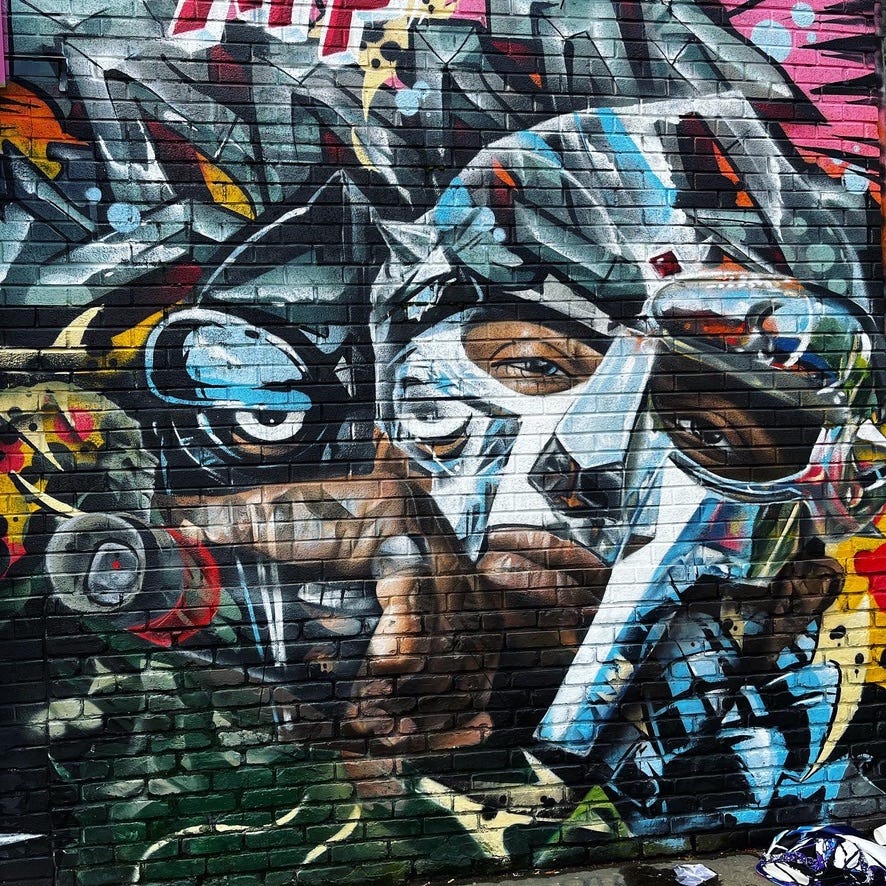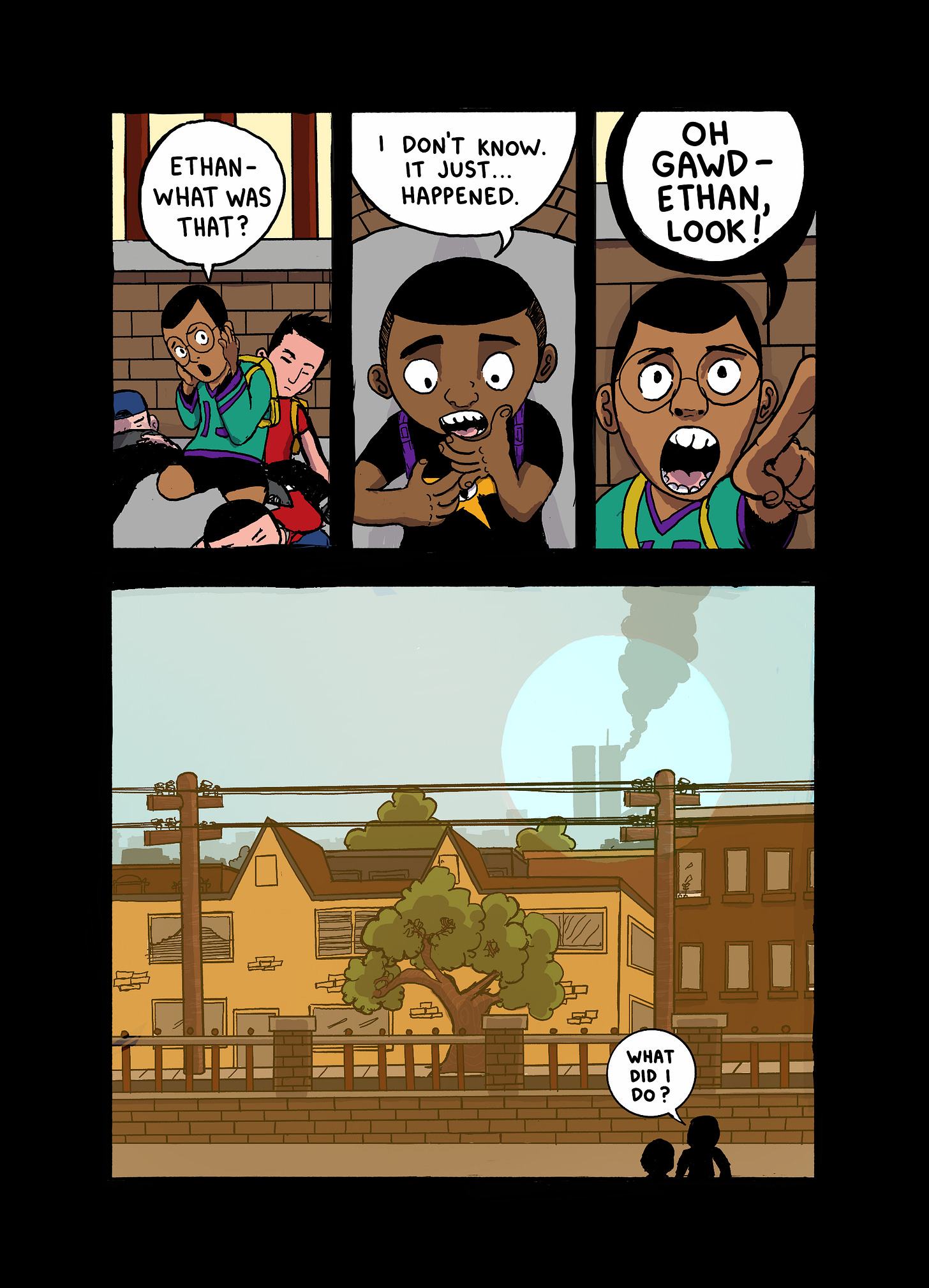9 Sparks That Shaped My Comic Boom Kid
Celebrating 9 years of Boom Kid by sharing the sparks that shaped its world.
The Stoic Quote of the Week
“By other men's labors we are led to the sight of things most beautiful that have been wrested from darkness and brought into light; from no age are we shut out, we have access to all ages, and if it is our wish, by greatness of mind, to pass beyond the narrow limits of human weakness, there is a great stretch of time through which we may roam.”
— Seneca, On The Shortness of Life
Hey there!
Every comic starts somewhere. Boom Kid, my hip-hop superhero comic, began with sparks. Moments, people, and pieces of culture that left a mark on me and refused to let go.
Writing and drawing this story has been one of the most rewarding projects of my life. It’s opened doors I never imagined, connected me with incredible people, and given me the chance to share my creative vision.
As we mark the 9th anniversary of Boom Kid Chapter 01, I want to shine a light on my process and share 9 of the inspirations that shaped this comic. Not to give you a formula, but to show how I’ve taken the things that matter to me and turned them into a world I wanted to tell stories in.
Let’s dive in.
1. Brooklyn is the beating heart of the story.
Brooklyn isn’t just a backdrop—it’s a character. It raised me. It shaped my worldview.
Every street corner, subway ride, and block party informed Boom Kid. Where else would a hip-hop superhero comic take root?
2. Rap beefs showed me the drama of larger-than-life battles.
I grew up surrounded by hip-hop in Brooklyn, where rap battles were more than music—they were culture. The Nas vs. Jay-Z beef was everywhere in my youth, and years later, Drake vs. Meek Mill carried that same electricity, except on social media’s instant stage.
That energy became the heartbeat of Boom Kid. I asked myself: what if rap beefs weren’t just lyrical duels but actual super-powered showdowns? That “what if” became the premise.
3. MF DOOM proved that hip hop and comics belong together.
When I first heard MF DOOM on his Danger Doom project with Danger Mouse, it was through Adult Swim. His mask, his comic book references, his larger-than-life persona—it all clicked.
He showed me hip hop and comics weren’t separate worlds. They fed each other. That’s why one of Boom Kid’s central figures, Bass-Slap, wears a mask and embodies that same comic-hip hop fusion.
4. The Hulk taught me about inner battles and raw power.
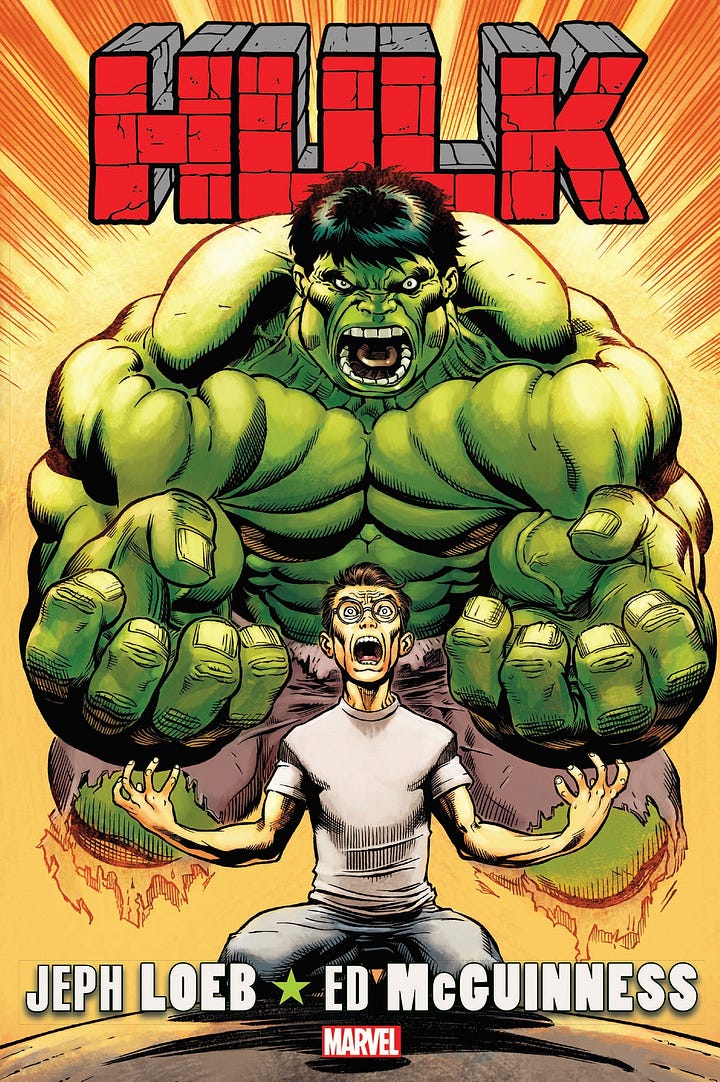
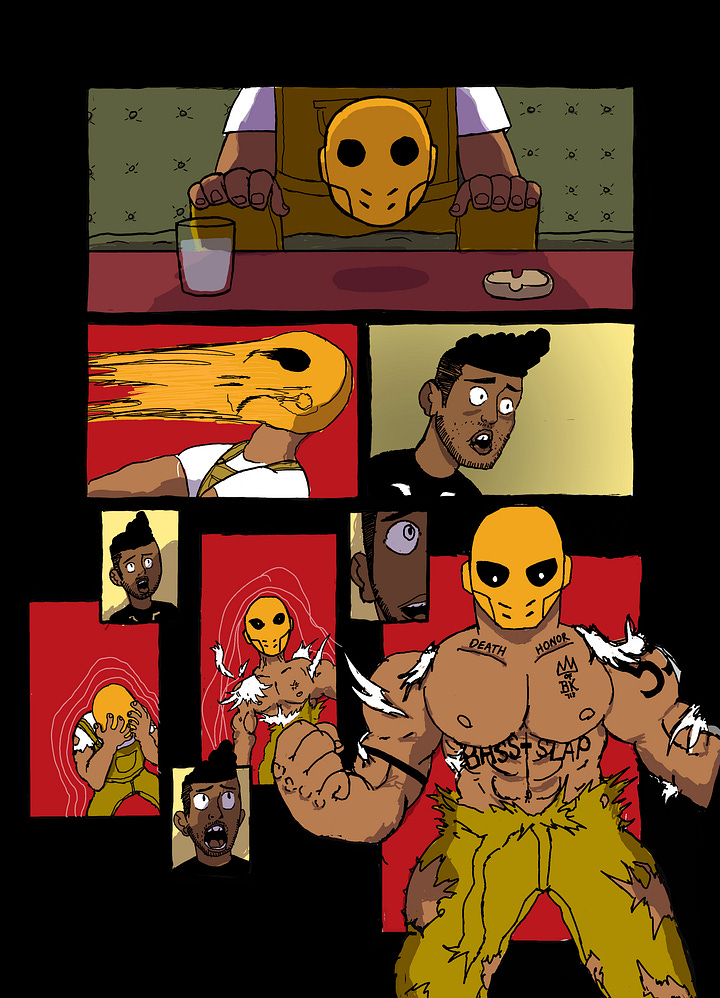
The Hulk has always been my favorite superhero—period. His constant struggle between calm and chaos mirrored feelings I’ve carried my whole life.
Bass-Slap channels that same duality—massive, powerful, and fueled by sound. I imagined the thunder of a bass guitar as his presence: heavy, shaking, unavoidable. That’s where his name and design came from.
5. Black Bolt validated the power of the voice as a weapon.
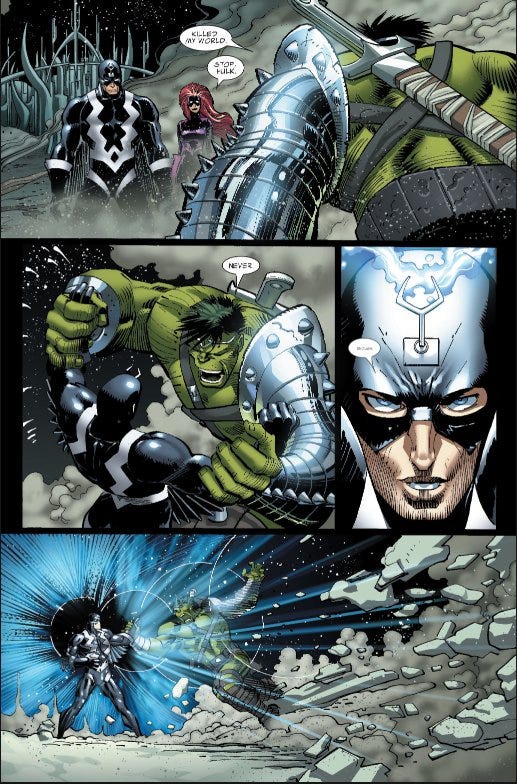
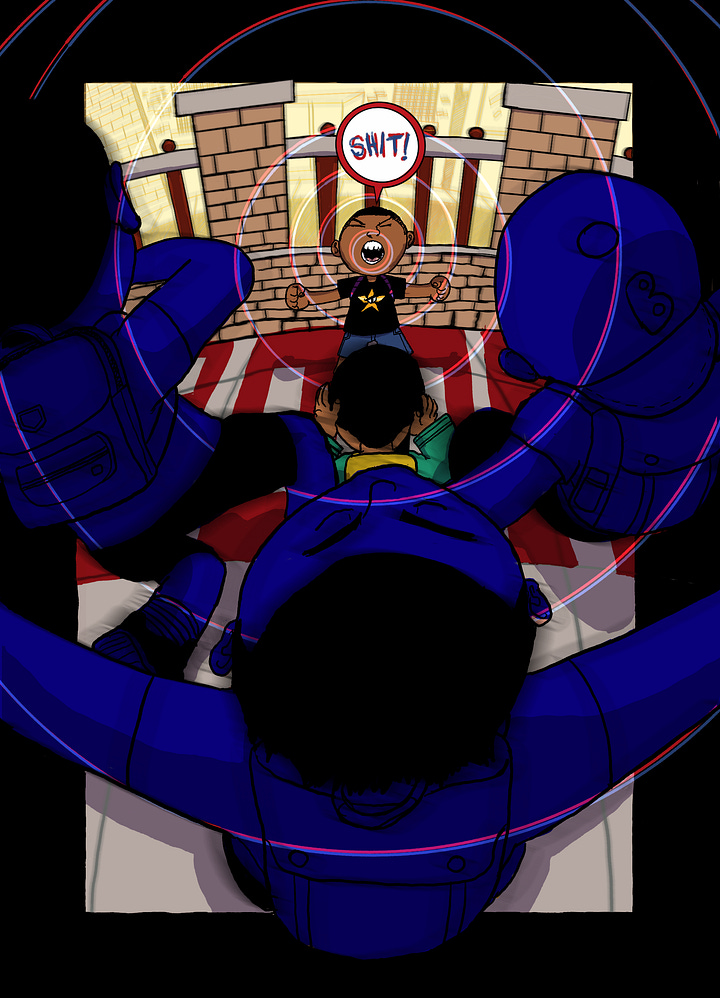
Black Bolt, leader of the Inhumans, barely appears in mainstream comics, but his ability struck me. His voice could destroy cities.
I’d already been inspired by thunder growing up in the Northeast, but Black Bolt showed me that voice itself could be a superpower. That idea echoes in Boom Kid’s DNA: a voice is more than a tool. They can be weapons.
6. 9/11 left scars that shaped my characters’ trauma.
The events of September 11th are something I can’t forget. They shaped my childhood and my city. “Never Forget” became personal, not just a slogan.
So it shaped my characters, too. Bass-Slap lost his father in the attack. His forearms bear the words “Never” and “Forget” when in Hulk-form. Boom Kid himself first discovered his powers the same day the towers were struck, creating a link between personal trauma and power. Their friendship deepened through that shared pain.
7. HBO’s Girls showed me the power of great writing and vulnerability.
Girls is one of my favorite shows because it stays raw and messy. It turns awkwardness into sharp dialogue and builds characters who frustrate you but still feel real.
One line sticks with me: when Marnie and Elijah talk about her relationships, Elijah suddenly blurts, “Old Man Ray?” The moment lands simple, hilarious, and unforgettable.
I gave Lena Dunham a shoutout in Boom Kid by naming a classic Boom Kid track in Chapter 01 “Old Man Ray.” It’s my thank you for putting her vulnerability on screen and proving storytelling works best when it stays raw, confessional, and unafraid to be uncomfortable.
8. Surprise album drops taught me timing and impact.
2015 gave us To Pimp a Butterfly and If You’re Reading This It’s Too Late—both released without warning. The culture shifted overnight.
That inspired me to think about how Boom Kid should enter the world. Not with a long build-up. With surprise. With impact. The timing mattered as much as the art.
9. Straight Outta Compton showed me the epic scale hip hop deserves.
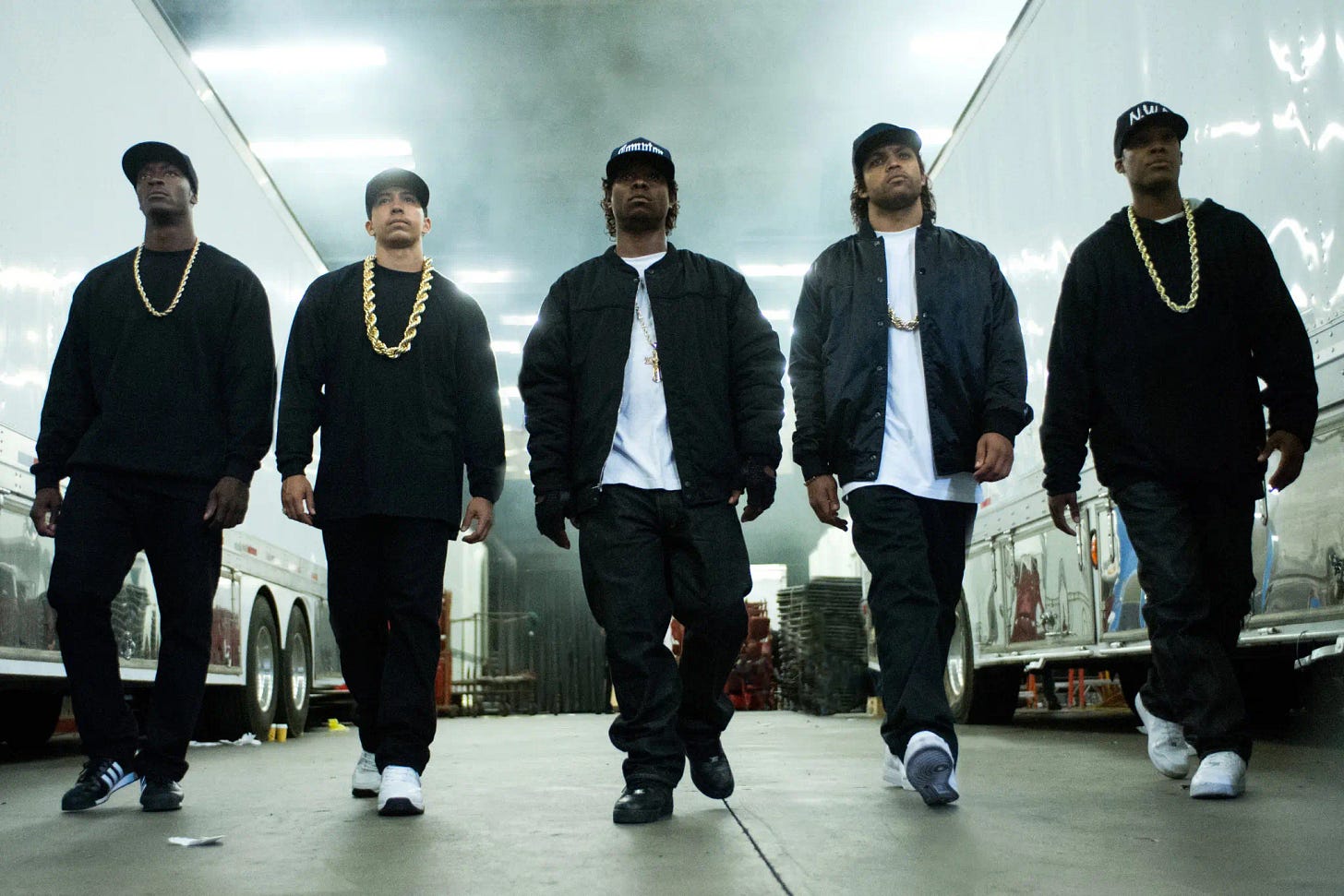
When this biopic landed in theaters, it felt like a superhero movie. The characters were larger than life, the stakes high, the drama electric.
It made me imagine a “shared universe” of hip-hop legends told with the same scale as Marvel or DC. Since Hollywood wasn’t going to do it (especially after that weak Tupac film), I decided to build it myself. Boom Kid became my hip-hop superhero universe, focused on the drama behind the music, not just the music itself.
Looking back, these 9 sparks lit the fire that became Boom Kid.
From Brooklyn’s streets to MF DOOM’s mask, from rap beefs to surprise album drops—Boom Kid is stitched together from all the things that made me.
Nine years later, this comic still carries that same energy: raw, chaotic, hopeful, and undeniably Brooklyn.
That’s the beauty of inspiration—it isn’t about copying, it’s about transforming. These influences gave me the fuel to tell the story I wanted to tell.
If you enjoyed this breakdown of the inspirations behind Boom Kid and want to keep going, last week I shared 9 lessons I’ve learned from making comics over the years. You can read it here: Gutter Thoughts 027.
Thanks for being part of the journey.
Haven’t read my Boom Kid! Well what are you waiting for? Check it out with the link below.
This issue is sponsored by me.
I created Cut the Learning Curve, a free 5-day course for aspiring comic creators who are ready to stop guessing and start creating with confidence.
And if you’re more of a founder or creative team who wants this done for you, I also ghostwrite story-driven newsletters that build trust and drive conversion.


